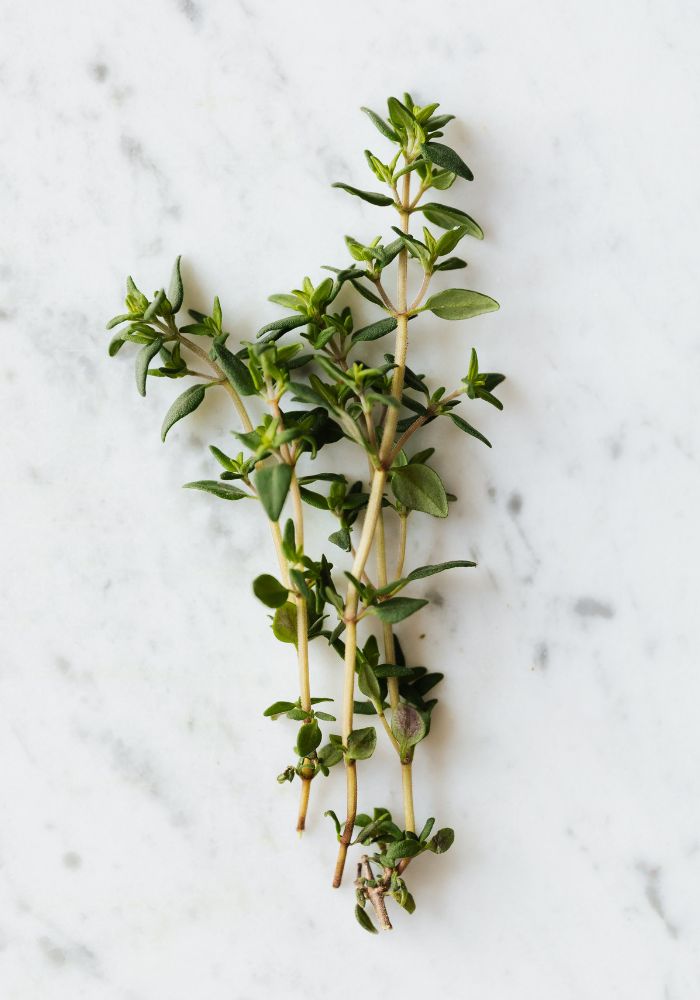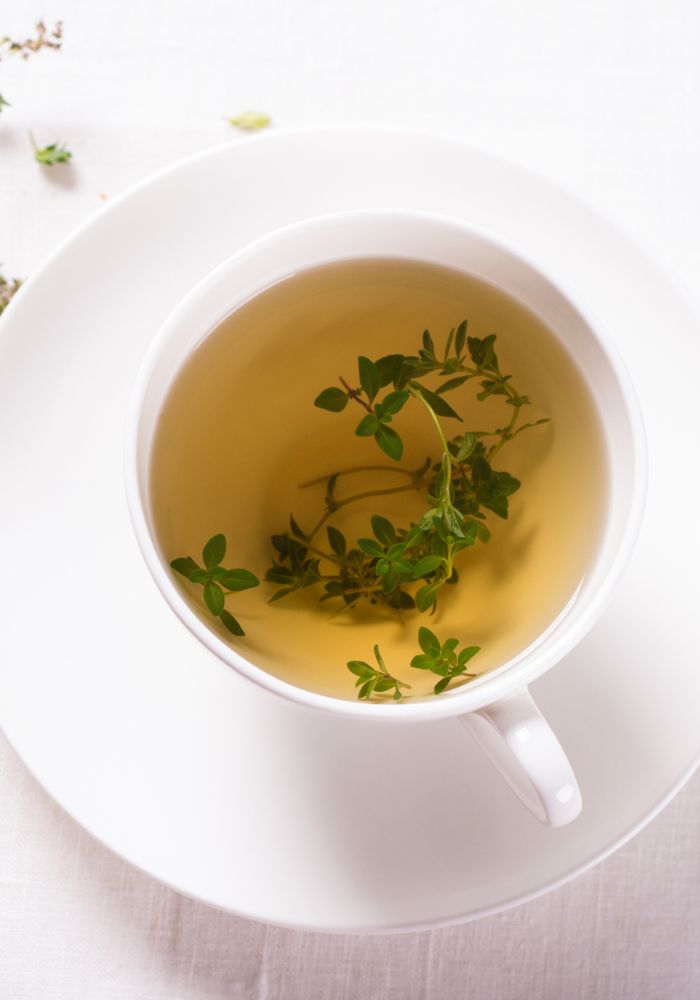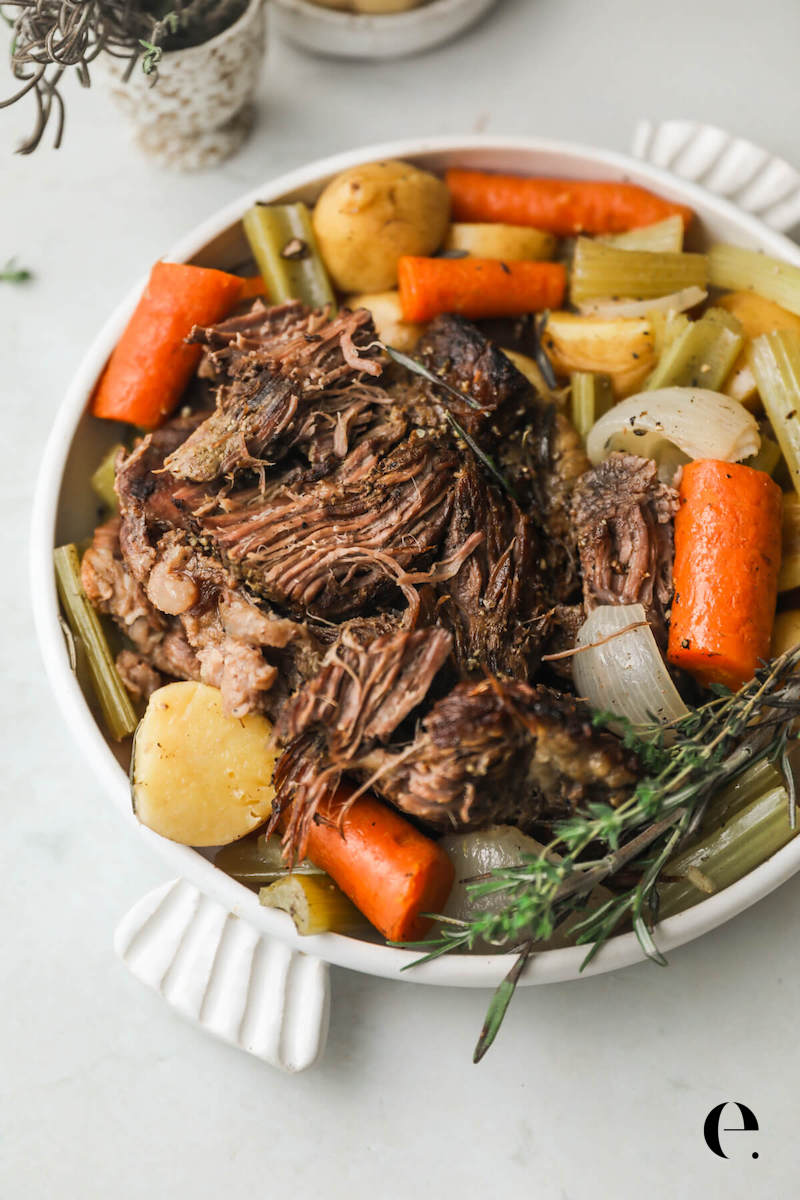10 Healthy Ways to Use Fresh Thyme


Fresh thyme not only smells and tastes delightful, but it also has wonderful health benefits.
Fresh thyme is characterized by its earthy, soothing, slightly minty flavor. Plus, along with fresh mint, it’s one of the easiest herbs to grow!
I recommend planting from an herb start in early spring to use fresh thyme all throughout the spring, summer, and fall. For around $3-$4 dollars, you can grow herbs like mint and thyme for months without having to spend extra money or worry that they’ll go bad in the refrigerator.
Thyme has been used for centuries as a cornerstone of both culinary tradition and natural wellness. I recommend using it often to enjoy both the flavor and health benefits.
Read More: 15 Healthy Ways to Use Fresh Mint
Health Benefits of Thyme:
- Antimicrobial Properties: Thyme contains thymol, a compound known for its ability to reduce bacterial, viral, and fungal infections.
- Antioxidant Capacity: Thyme is rich in antioxidants, which combat free radicals and support overall health.
- Respiratory Relief: Thyme and thymol have been shown to relieve coughs, sore throats, and other respiratory ailments.
- Digestive Health: Thyme can aid digestion and reduce discomfort from gas and bloating.
- Mood Enhancement: The herb has been linked to mood-boosting effects, potentially alleviating symptoms of stress and depression.
- Skin Health: Applied topically, thyme can promote skin health by treating fungal and bacterial infections.
Whether you’re crafting a hearty soup or seeking natural remedies for common ailments, here are 10 health-conscious ways to use fresh thyme:
1. Elevate Your Morning Eggs
Start your day on a herby note by adding fresh thyme to your scrambled eggs, omelets, or frittatas.
The subtle, earthy flavor of thyme pairs beautifully with eggs, providing a simple yet sophisticated twist to your breakfast. A sprinkle of chopped thyme can transform the ordinary into a gourmet experience.
2. Make Thyme-Infused Dipping Oil

Infuse olive oil with fresh thyme to create a versatile ingredient for your kitchen.
Thyme-infused oil can add depth to salad dressings, marinades, and roasted vegetables or be used as a dipping sauce for bread or crackers.
Creating a thyme-garlic infused olive oil is a delightful way to add a burst of flavor to your dishes, from salads and roasted vegetables to bread dips. Here’s a simple recipe to craft your own aromatic oil:
(Tip: Make small batches and use quickly when adding fresh ingredients to oil as fresh ingredients will spoil more quickly.)
Garlic-Thyme Oil Ingredients:
- 1 cup (240ml) of high-quality extra virgin olive oil
- 5-6 sprigs of fresh thyme
- 2-3 cloves of garlic, peeled and lightly crushed
Instructions:
- Optional: Sterilize Your Bottle or Jar: If you use your oil within a week you don’t need to do this. If you want to keep it longer, before you start, ensure your storage bottle or jar is thoroughly sterilized to prevent bacterial growth. You can do this by boiling it in water for about 10 minutes and then letting it dry completely.
- Prepare the Ingredients: Gently rinse the thyme sprigs under cold water and pat them dry with a clean towel. This is to ensure there’s no moisture as it can lead to spoilage.
- Combine Oil with Thyme and Garlic: In a small saucepan, combine the olive oil, fresh thyme sprigs, and garlic cloves. Heat the mixture over low heat until it is warm but not simmering, about 5-10 minutes. It’s crucial to avoid letting the oil simmer or boil as high heat can degrade the olive oil’s flavor and destroy the delicate aromas of the thyme and garlic.
- Let the Mixture Infuse: After warming, remove the saucepan from the heat and let the mixture cool to room temperature. The thyme and garlic will continue to infuse the oil as it cools, deepening the flavors.
- Strain and Store: Once cooled, strain the oil through a fine mesh sieve or cheesecloth into your sterilized bottle or jar to remove the thyme sprigs and garlic cloves. If you prefer a stronger flavor, you can add fresh sprigs of thyme and a new clove of garlic (lightly crushed for a more subtle flavor or finely sliced for a stronger garlic presence) to the bottle for decoration and extra infusion. However, be mindful that adding fresh garlic can introduce moisture, so it’s generally safer to store this version in the refrigerator and use it within a week or two.
3. Homemade Thyme Tea for Respiratory Relief

Thyme is a potent herbal remedy, especially for respiratory ailments.
To prepare thyme tea, steep 1-2 tablespoons of fresh thyme leaves in hot water for about 10 minutes.
This aromatic tea can help soothe a sore throat, coughs, and even symptoms of bronchitis, thanks to thyme’s natural antiseptic properties.
4. Make French Onion Soup
Did you know that, aside from onions, fresh thyme is the predominant flavor in a classic French Onion Soup?
This classic dish, with its rich broth, caramelized onions, and melted cheese, is elevated to new heights with the addition of fresh thyme, bringing an earthy and aromatic depth to the soup.
5. Make a Compound Thyme Butter

Combine 1 stick (1/2 cup) softened butter with finely 2 teaspoons chopped thyme, 2 minced garlic cloves, and a pinch of salt if your butter is unsalted to create thyme butter.
This compound butter can be spread on bread, dolloped onto grilled meats, or used to finish vegetables, adding a luxurious and flavorful touch to any meal.
6. Fresh Thyme in Baking
Experiment with adding fresh thyme to your baking, especially in savory bread, scones, and biscuits.
One of the original recipes for my famous Almond Flour Bread recipe contains a blend of fresh rosemary and fresh thyme, and it’s fantastic!
Thyme pairs wonderfully with cheeses and garlic, offering a new layer of flavor to homemade baked goods. It’s a subtle twist that can make your baked treats stand out.
7. Boost Your Roasts and Stews


Thyme is wonderful in a Classic Pot Roast recipe and makes a great addition to soups and stews.
Incorporate fresh thyme into your roasts, stews, and slow-cooked dishes.
Its robust flavor complements a wide range of meats and vegetables, infusing them with a complexity that elevates the dish. Thyme’s resilience to long cooking times makes it an ideal herb for these types of preparations.
8. Enhance Your Homemade Jams and Jellies
Thyme isn’t just for savory dishes.
Incorporate fresh thyme into your fruit jams and jellies for a sophisticated flavor profile.
Peach, strawberry, and fig jams, for example, can benefit from the subtle savory contrast thyme provides. It’s a simple way to elevate your homemade preserves.
Thyme-Infused Jam Appetizer Idea
Spread your thyme-infused jam over a log of fresh goat cheese, warm it in a 350°F oven for 10 minutes, and serve it with crackers for an elevated appetizer people will love.
9. Thyme for a Healthy Gut
Like mint, thyme is beneficial for digestion.
Incorporate fresh thyme into your meals not only for its flavor but also for its ability to aid in digestion and help soothe gastrointestinal discomfort.
Nibble on it straight from the garden. It’s a delicious way to support your gut health. The naturally occurring thymol in thyme will also freshen your breath!
10. A Natural Deodorizer and Insect Repellant


Beyond its culinary and medicinal uses, thyme can serve as a natural deodorizer and insect repellant.
Create a thyme bouquet to freshen up your kitchen or hang dried thyme in closets to ward off moths. The herb’s strong aroma is pleasant to humans but discouraging to insects.
Thyme’s versatility in the kitchen and natural medicine cabinet offers a myriad of ways to enrich our daily lives. From enhancing the flavors of our meals to bolstering our health, fresh thyme is a testament to the profound impact of simple ingredients on our overall well-being.




